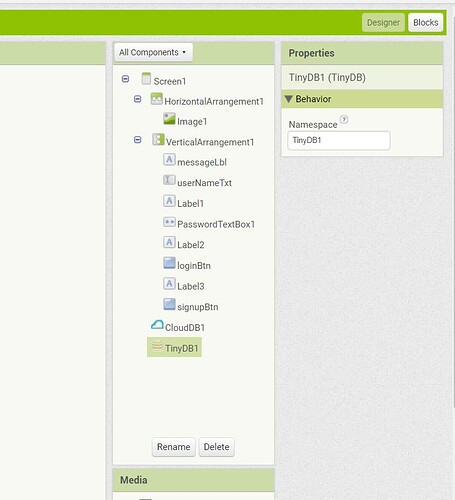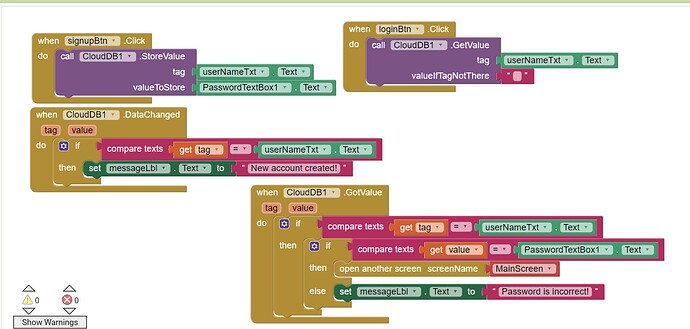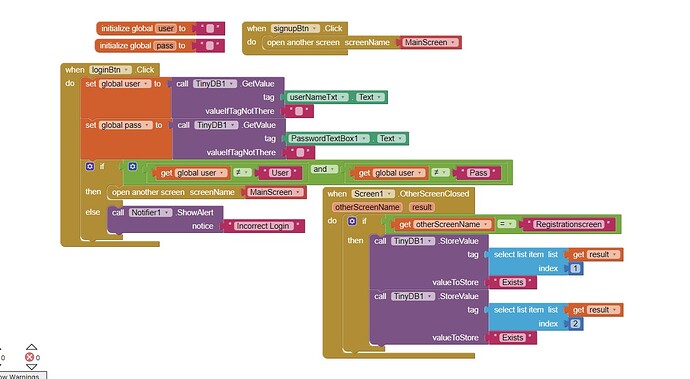I want to make an input screen with username and password for a list of tasks calendar, schedule day movements.
But any new member who will sign up will not have access to another registrant's day schedule.
I made one where each subscriber has access to the already existing list.
Can it be made so that everyone who joins can't see the previous list, but only has a blank list for their own?
Stockez dans une Tiny DB avec le tag de l'utilisateur une liste avec les événements.
Par exemple, sous le tag utilisateur_1, stockez ["[01/01/2000","Anniversaire"]"] (utilisez le bloc de liste)
Nico
Unfortunately I don't understand what and how
Stockez une liste de paire (nom et date de l'événement) dans tiny db sous le tag du nom de l'utilisateur.
I tried doing this but it still gives me the same situation.
I don't understand the way you suggest, maybe the French confuses me.
You really do not need all these real screens. Use virtual screens, it will make the block coding much easier.
1o
This course seems to be very useful and thank you. But I tried to do something like it says, but in the live test with connection it didn't work, when I clicked the button it stayed the same
2o
I want to make an application like the one I described above that accepts multiple registrations but one does not have access to the other's data.
In what I did everyone when they log in they can see what someone else who signed up has on their list
Here it is
LoginScreen.aia (213.5 KB)
Wow what a great idea to use screen simulations on a screen.
Very useful.
I will study it and make use of this mod.
Thanks a lot for the idea I didn't know
I have a question about this: If in the simulations we can also put a website to appear before anything else
Yes, you can do that.
That's wonderful.
Can you please show me if there is a post on how I can make a list with a sign up screen but everyone who signs up can't access another sign up's list data?
Save each users data to a tag with their username in it e.g. myuser_data.
Then when a user signs in, the app can call back only their data.
Nicholas above gave an example but I didn't understand it.
If there is a more complete example that would be great.
I'm not a professional app developer and It's not long since I started building mobile apps intensively, until I can easily understand the laconic answers it may be a long time yet.
Sorry for that.



